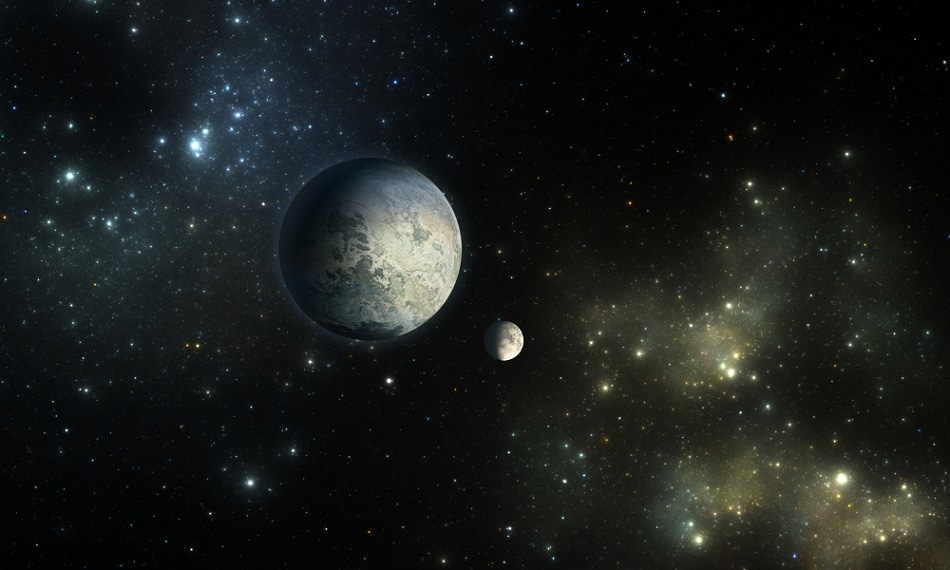
Image Credit: Shutterstock.com/Jurik Peter
Astronomers in California have recently detected a giant exoplanet orbiting its parent star in a somewhat peculiar fashion. In fact, this huge planet, that is three times the mass of Jupiter, acts more like a comet with its prolonged elliptical cycle that takes between 45 to 100 years to complete.
Having observed the parent star, known as HR 5813, since the 1990s, astronomers did not find any evidence of the orbiting exoplanet until very recently – only now did the strange trajectory reveal the exoplanet’s existence. Known as HR 5183 b, the planet can be found over 102 light-years from Earth in the Virgo constellation.
The recent discovery was published in a report led by the California Institute of Technology (Caltech).
This planet is unlike the planets in our solar system, but more than that, it is unlike any other exoplanets we have discovered so far.
Sarah Blunt, lead author of California Institute of Technology (Caltech) report
Aside from its giant mass, the strange orbit is what also makes this planet exceptional as most of its journey’s path lies way beyond the reach of its parent star. Upon approaching HR 5183, the orbit undergoes a brief slingshot effect around the star as HR 5183 b heads far out into its planetary system – towards the very edge.
This planet spends most of its time loitering in the outer part of its star’s planetary system in this highly eccentric orbit, then it starts to accelerate in and does a slingshot around its star.
Andrew W. Howard, Caltech professor of astronomy and leader of The California Planet Search
Howard continued, "We detected this slingshot motion. We saw the planet come in and now it's on its way out. That creates such a distinctive signature that we can be sure that this is a real planet, even though we haven't seen a complete orbit."
It is most likely that the mysterious orbit was caused by a cataclysmic event such as HR 5183 b colliding with a planet of comparable mass. Typically, over long periods of time, planets within a system orbiting a star usually take on something close to a circular orbit. This fact gives more reason to believe HR 5183 b’s orbit is the result of an immense cosmic event resulting in the other planet being totally smashed out of the planetary system. "This newfound planet basically would have come in like a wrecking ball," said Howard, "knocking anything in its way out of the system."
To detect the planet, astronomers used a method known as ‘radial velocity’ which is based on gravity and the Doppler effect – this is when light decreases or increases in frequency as an observed object moves towards or away from its source and vice versa. This is due to the fact that stars do not remain fixed in their position but rather move in relatively small circles as a response to the gravitational pull of the orbiting planets. Therefore, creating a shift in the light wavelength of the star which, depending on the whereabouts of the planet, fluctuates between red and blue. These shifts assist astronomers in their search for planets.
As previously mentioned, teams of astronomers have been long observing the parent star HR 5183, patiently awaiting a significant detection such as this.
For almost 20 years, our data did not show any sign of a planetary companion" around this star … and then we observed the 'slingshot' which only lasted about two years. If we would have stopped observing the star after 15 years, we would have missed it. It makes me wonder how many other stars have massive planets on these slingshot orbits and we usually miss them.
Michael Endl, senior research scientist at the University of Texas at Austin's McDonald Observatory
So, once again, this discovery underlines how diverse, extraordinary, and unpredictable planetary systems can be, especially in contrast to our own solar system.
Howard continued, "Copernicus taught us that Earth is not the center of the solar system, and, as we expanded into discovering other solar systems of exoplanets, we expected them to be carbon copies of our own solar system," Howard said, "but it's just been one surprise after another in this field. This newfound planet is another example of a system that is not the image of our solar system but has remarkable features that make our universe incredibly rich in its diversity."
Disclaimer: The views expressed here are those of the author expressed in their private capacity and do not necessarily represent the views of AZoM.com Limited T/A AZoNetwork the owner and operator of this website. This disclaimer forms part of the Terms and conditions of use of this website.